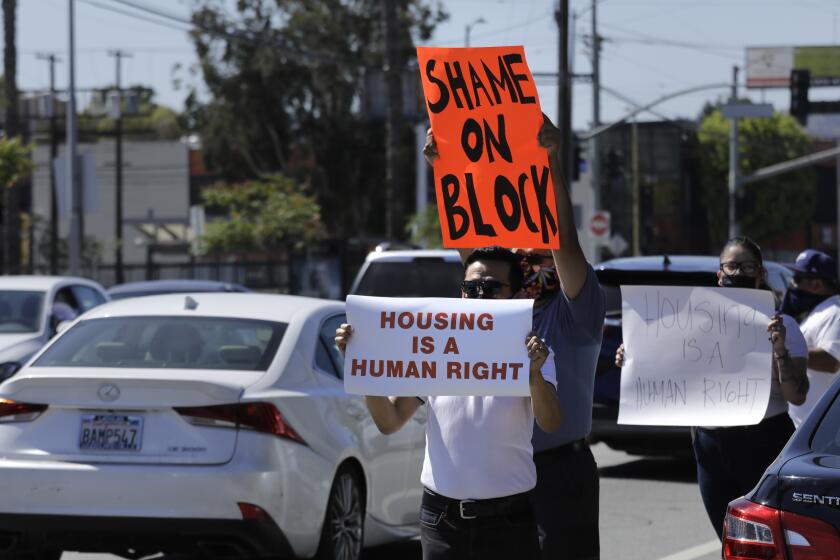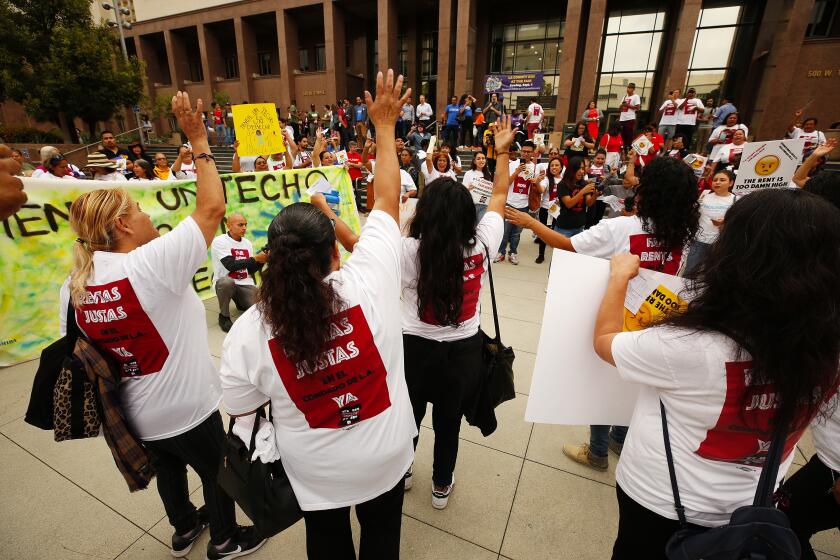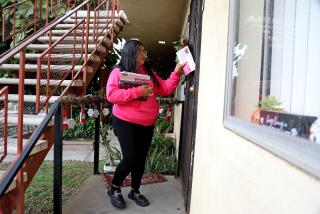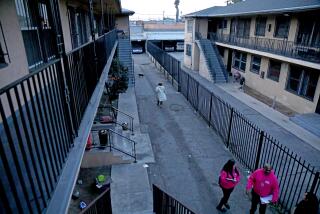Pandemic aid saved millions of Americans from eviction, and the data prove it
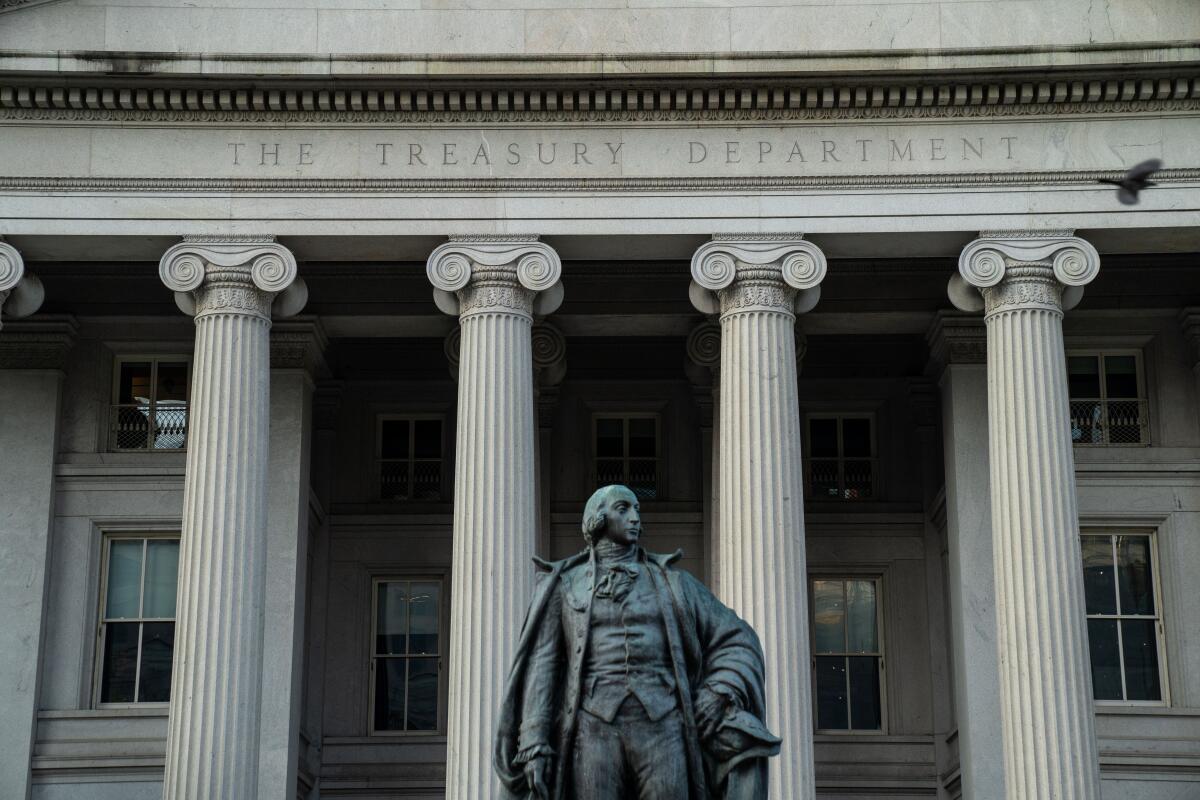
- Share via
Edwin Bautista was a senior at the University of Texas at Austin and a part-time technician at a consulting firm when inflation started to ravage his spending power. After his rent surged past $1,000 a month in early 2021 he feared he would have to move out — until he got a $7,300 lifeline from the federal Emergency Rental Assistance Program.
That kept him in his apartment and even helped him build a small nest egg. Now graduated and working full time, he’s a first-time home buyer.
Bautista is one of millions of renters who benefited from temporary programs put in place during the COVID-19 pandemic, including restrictions on evictions, income support — and the rental assistance program. One of the most ambitious investments in emergency housing in the nation’s history, it has disbursed $46 billion in aid to state and local governments since early 2021 and kept millions of people in their homes, according to an analysis of government data by Bloomberg News.
With rents still climbing and the economy at risk of a recession, housing advocates are urging the Biden administration to keep helping tenants. That will be hard under legislation signed into law last weekend that suspended the nation’s borrowing limit as it clawed back unused pandemic aid and imposed caps on future increases in the federal budget.
“We are facing an affordable housing crisis in this country, yet Republican lawmakers are insisting on slashing funding for and jeopardizing the future of critical housing affordability programs that support working families,” Sen. Tina Smith (D-Minn.) said in a statement.
A year after tenant advocates sued the state housing department, a settlement requires it to disburse rent debt relief funds to eligible tenants.
Surveys conducted by the U.S. Census Bureau show that, on average, 48.46 million people reported being caught up on their rent during the first quarter of this year, 4.7 million more than before the Emergency Rental Assistance Program was put in place as the economy was reeling from shutdowns. Even though the estimated number of renters in the country increased during the period, the number of people behind on their rent fell.
“These policies drove eviction filing rates to historic lows,” a report from the Eviction Lab stated. Eviction filings were cut by more than half in 31 cities they sampled, largely due to COVID-era policies, according to the lab, a housing research group at Princeton University.
Nevertheless, Republicans have shown little appetite for continuing pandemic-era programs, including rent assistance, as they seek to reduce the federal budget deficit.
“Progressives’ attempts to make crisis programs permanent, even after an emergency ends, is just another example of Democrats spending taxpayer money we don’t have,” Rep. Patrick McHenry (R-N.C.), a key negotiator on the debt limit bill, said in a statement. “Now it’s time to end this program.”
The Treasury Department let states, counties and cities use the emergency rent aid in one of three ways: on direct assistance to households, housing stability measures and administrative expenses. About $33 billion of the $46 billion was used for direct assistance to more than 7 million households, according to a Bloomberg evaluation of Treasury data.
Some of the proposals would be the first of their kind in Los Angeles County, including allowing tenants to avoid eviction if they fall behind on a month’s worth of rent.
States, on average, sent 70% of the funds they used directly to tenants and landlords, and those that spent most of the money for direct assistance tended to help more tenants get up to date on their rent — suggesting that the program was having the desired effect. California, for example, used more than 75% of the $5.6 billion allocated to it from the rental assistance program for direct aid to tenants and landlords. The result: An average of 986,000 more renters were caught up on rent than before the program was established. New York saw about 440,000 residents catch up, or almost 10% of the tenants in the state.
North Dakota spent less on rental payments and it is one of four states — Louisiana, South Carolina and Georgia are the others — that saw the number of tenants behind on rent grow.
Direct assistance was limited to renters with income below 80% of the area’s median income and who were able to demonstrate that they were at risk of homelessness and were suffering a financial hardship because of the pandemic.
Bautista, the former University of Texas student, met the eligibility requirements. He now works as a management assistant for a low-income housing coalition. On the side, he doles out affordable housing advice to college students and recent grads.
“I’m not supposed to be where I am today,” he said. “This program changed my life.”
One in 10 residents in Los Angeles County are burdened by medical debt. And the uninsured aren’t the only ones vulnerable to debilitating health bills.
The Treasury Department and state governments were criticized for disbursing money too slowly at the program’s outset. Some states even had their funding reallocated.
The Treasury said it tracked some information, such as the number of dollars distributed, the number of households served and the demographics of its applicants. However, program administrators said they didn’t have the bandwidth to measure or poll whether recipients were able to catch up on rent.
“We faced a race with time. Experts were projecting a tsunami of evictions if we did not get the emergency rental payments flowing before the eviction moratorium ended,” Gene Sperling, a senior White House advisor and coordinator of the Biden administration’s American Rescue Plan, said in a statement. “The fact that we actually saw eviction rates go below historic averages was proof we did get payments out in time.”
Data on evictions are hard to come by, said Peter Hepburn, associate director of the Eviction Lab. There are more than 3,000 independently operated county courts that handle evictions, many of which often keep documents sealed, not digitized or both.
The lab credits the pandemic measures for preventing at least 800,000 evictions in 31 U.S. metropolitan areas it studied.
The rental assistance program itself “has been a godsend and a blessing for everyone who has been able to use those funds to remain housed,” said Mark Fessler, deputy director of litigation and training at the nonprofit South Carolina Legal Services.
More to Read
Inside the business of entertainment
The Wide Shot brings you news, analysis and insights on everything from streaming wars to production — and what it all means for the future.
You may occasionally receive promotional content from the Los Angeles Times.
